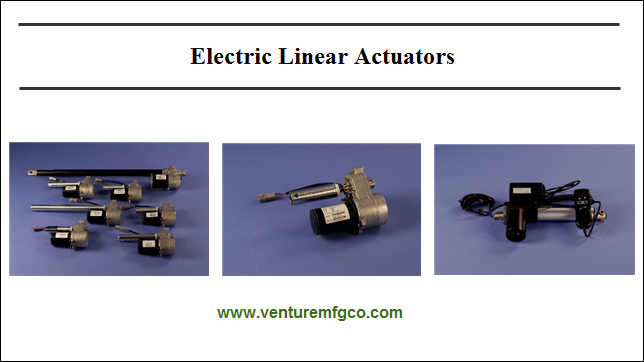Most of us know what linear actuators are. We have also seen the various areas of applications, where these actuators are used. But, how many of you really know how these linear actuators work? It is not at all a rocket science. It will be easy for you to understand the working of these devices. Particularly, the working of 12 volt electric linear actuators or 1200 series linear actuators is very easy-to-understand. These are among the most commonly used devices in a wide range of applications. Would you like to know in detail the exact working of these extremely popular actuators? In the following post, we will discuss the working principle, and the detailed working of these actuators.
What is the Working Principle of Electric Linear Actuators?
The basic working principle of electric linear actuators is to convert the rotary motion into a linear motion. This conversion of motion is done with the help of a gearbox and a lead screw. These are the two most important electric linear actuator parts.
Understanding the Design
If you want to understand how these actuators work, then first, you will have to get well versed with the design. As compared to the others, these actuators consist of fewer working parts. Thus, very little maintenance is required. Also, it makes the devices easy to operate. The following parts form the entire design of the electric linear actuators:
- Motor: This is one of the most important components of linear actuators, which actually makes the motion. A 12 volt DC motor is used, which interacts with other parts of the actuator to deliver the movement.
- Limit Switch: This component controls the motion of the device. It stops the movement, when triggered.
- DC Brushes: The current is conveyed between the stationary wires by the DC brushes. They are responsible for bringing the current into the actuators.
- Lead Screw: The main role of lead screws is to convert the rotational motion into linear motion. They are attached in the cylinder, and travel up and down, which facilitates the linear motion.
- Gears: They act as a connector between the motor and the lead screw, which helps them in a free movement.
- Cylinder: The motion, which is created by the motor, makes the parts of the cylinder to move to and fro. The cylinder does not move itself, however, the parts inside it do.
How Do the Electric Linear Actuators Work?
Now that you know how each part is involved in the working of the actuator, it will be easier for you to understand how these actuators actually work.
- The working of the actuator starts with the rotor and the stator assemblies. These assemblies facilitate the primary and secondary workings of the motor.
- Voltage is applied to the stator assembly, which acts as the primary workings. This voltage is then converted into a current. This current is shunted into the rotor assembly, which acts as the secondary workings.
- The working of the rotor and stator assemblies, helps create a field, which facilitates motion.
- The motion created by the motor is then passed to the cylinder. Here, cylinder interacts with the limit switch to convert this motion into a linear one.
- The cylinder is turned by the gears, which helps promote the linear motion.
Wasn’t is very easy to understand working? Are you eager to know more about these actuators for your application requirements? You can consult experts, like Venture Mfg. Co., who are expert manufacturers of electric linear actuators.

